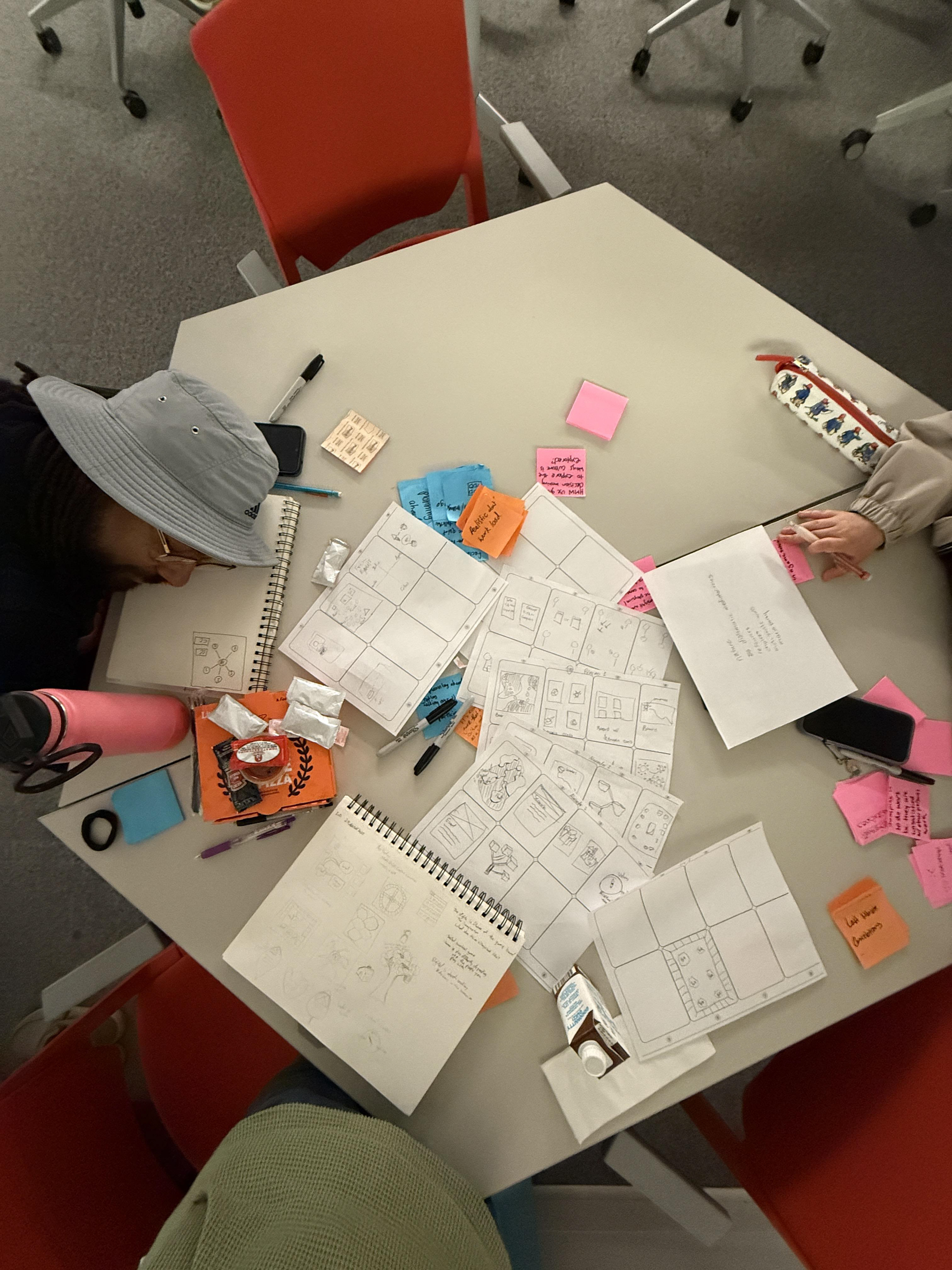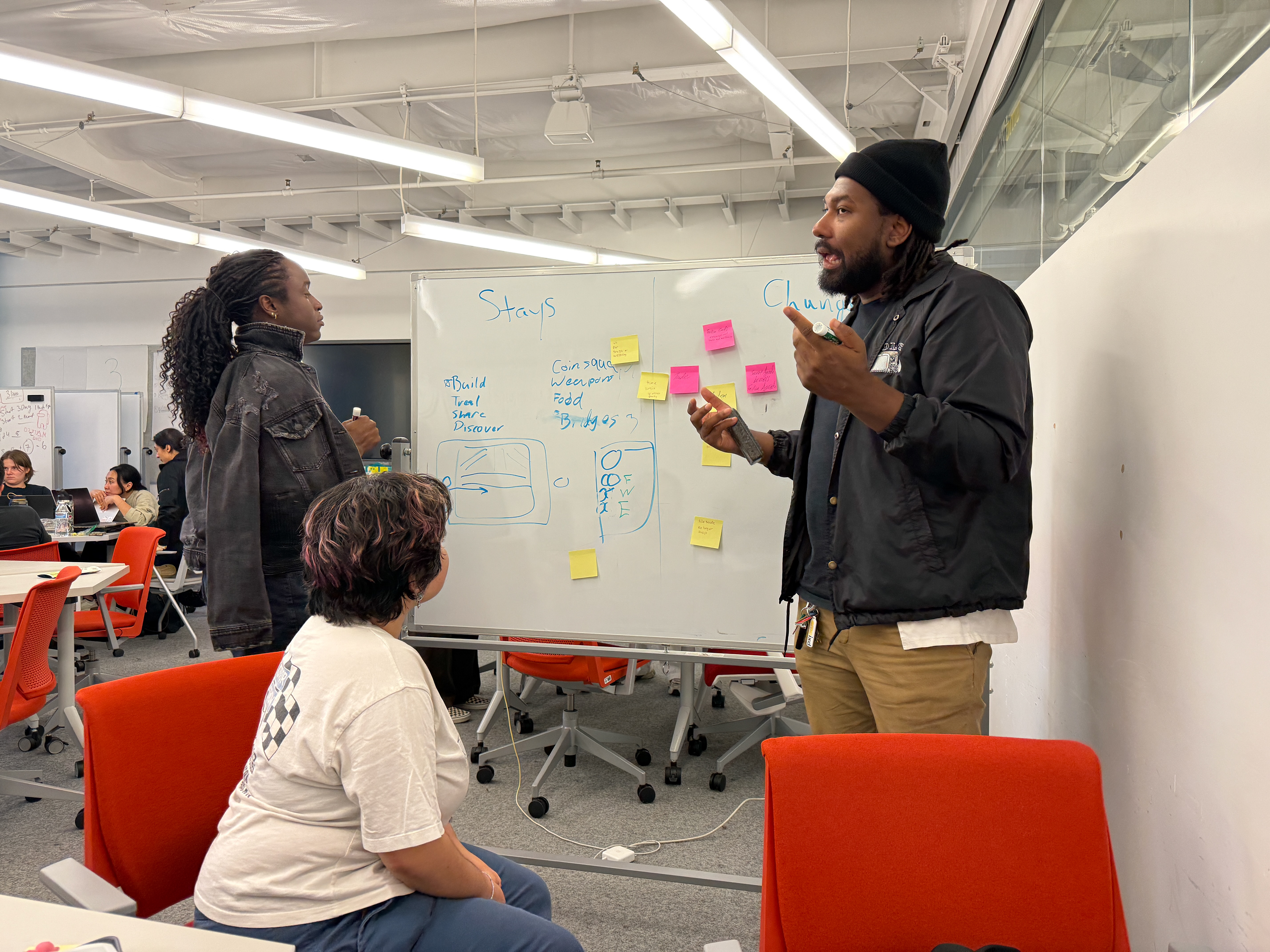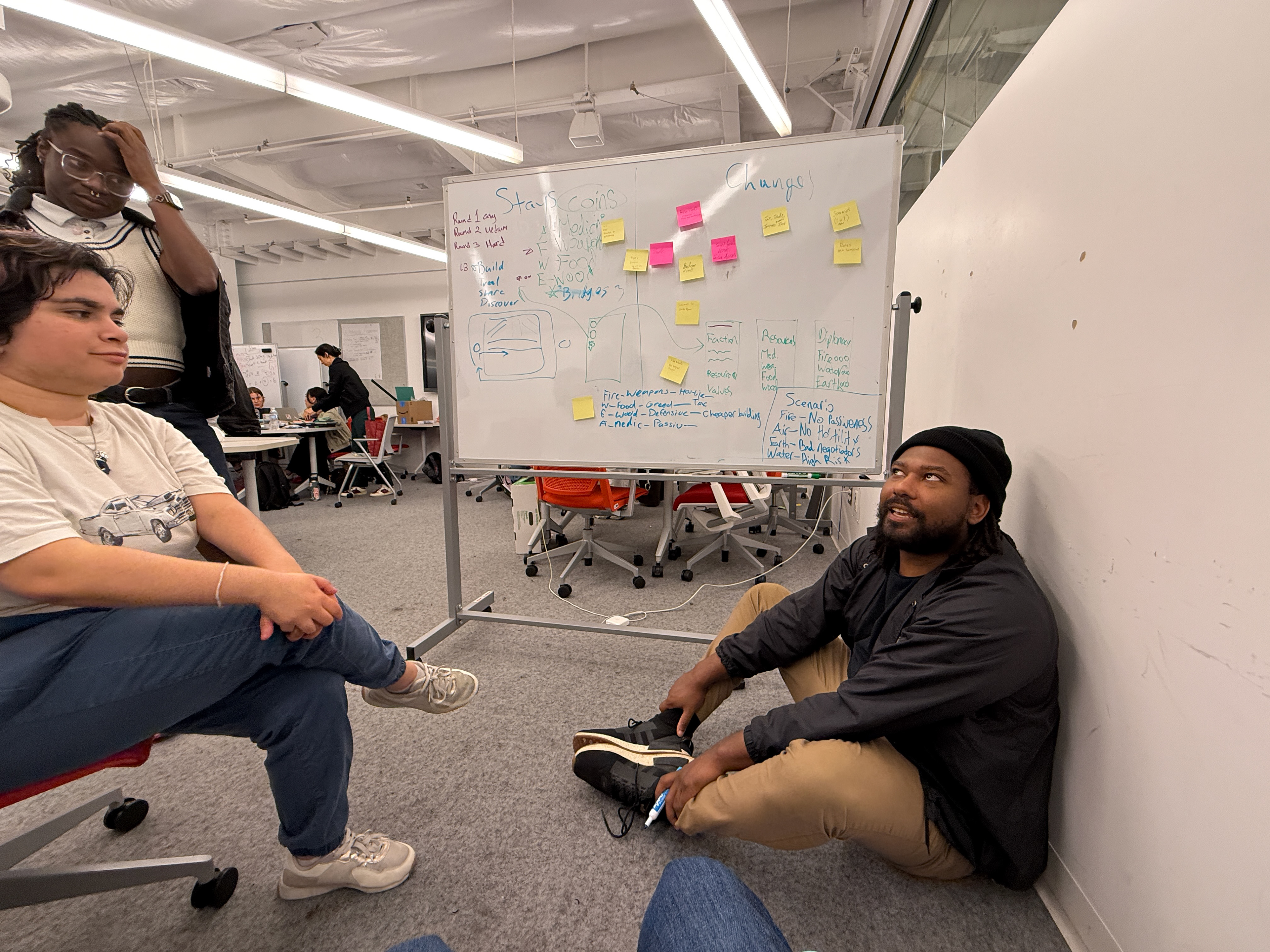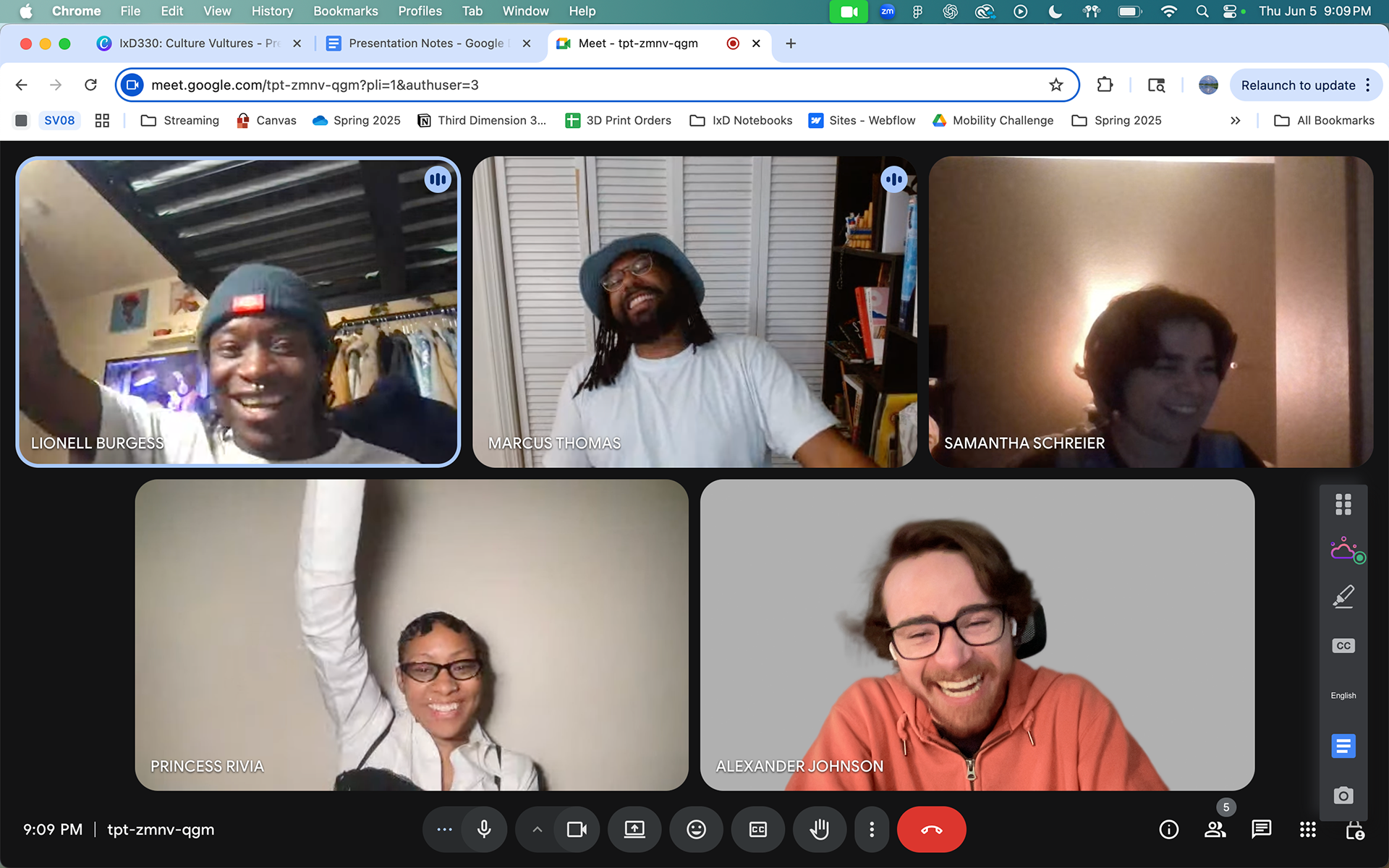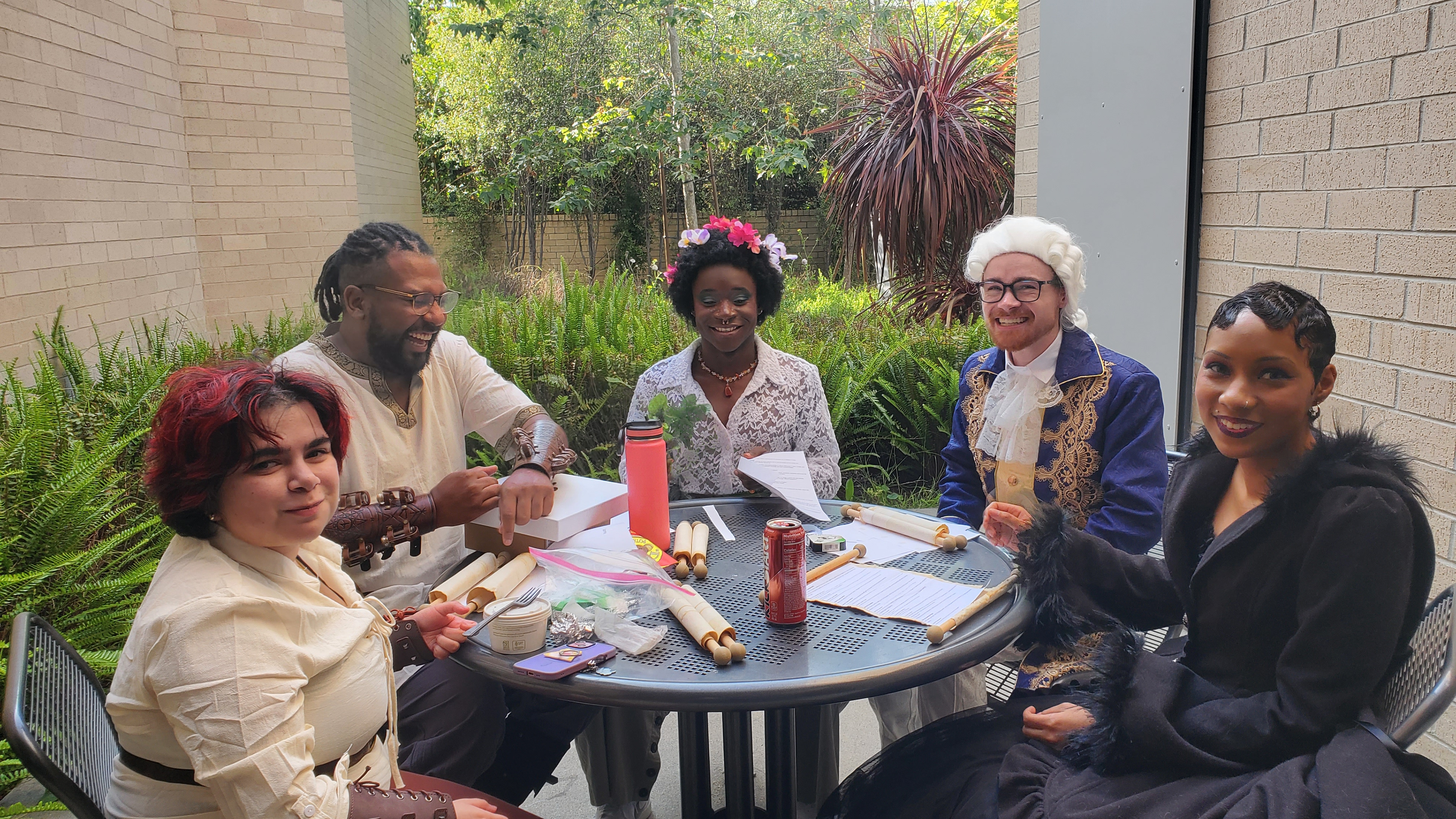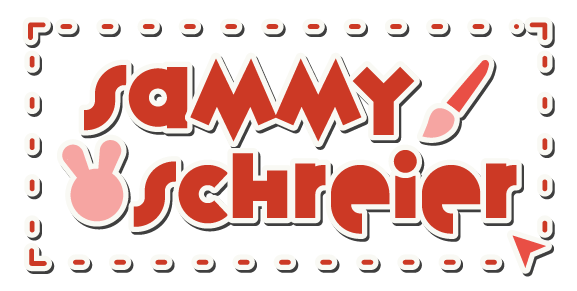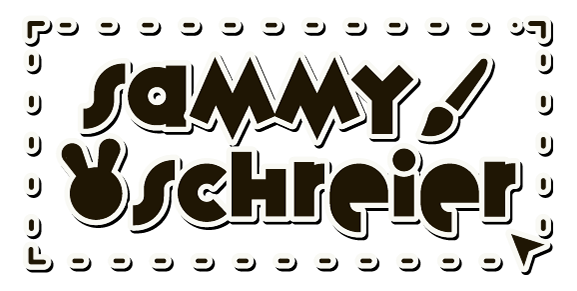Project Description
Bridge to Kultur is a physical-digital hybrid board game. The ultimate goal is to forge enough alliances and resources to survive "The Calamity". Through a fantasy lens, we stimulated intercultural communication through scenario events where moral choices affect the relationships you make. While the player has the choice to spend their turns and make their decisions however they want, their choices will be reflected in if they survive or not.
Project Concept
Physical and Digital Board Game
Physical and Digital Board Game
My Role
Lead UI Design, Game Mechanics and Narrative Design, Ideation, Research, Wireframing, Prototyping
Lead UI Design, Game Mechanics and Narrative Design, Ideation, Research, Wireframing, Prototyping
Problem
Often people face misunderstandings in cultural differences missing context, social norms, and customs that can drive people apart if not taking the time to be considerate. All of us being in LA has gave us an opportunity to be exposed to many cultures, but we find many missed opportunities of connection through not being able to navigate our cultural differences.
For this project, we decided to define culture as shared values, communication styles, behaviors, and social structures that share how different groups of people interact with each other. Through this lens of culture we decided to make a board game to stimulate intercultural communication through scenarios.
Research
Mainly our research centered around what kind of game we should try to make. We looked at multiple games but Mario Party, Queen's Dilemma, Pandemic, and Dungeons and Dragons were heavy inspirations we took from. Specifically looking at campaign style games from Dungeons and Dragon's and Queen's Dilemma, flow and resources from Mario Party, and roles and obstacles from Pandemic.
We also narrowed down our view in what game we should design by Insight Sorting and then creating a Experience Map and Matrix. We figured a social board game is our best opportunity to create a game tied to culture. We wanted players to interact with each other and learn about cultural nuances through practice. We also considered goals for the game to be tangible so that gameplay does not feel as if choosing the nicest option is the way to win. We want players to reflect on their actions and where they are coming from eventually in the long run of the game.
We figured we needed an app companion to assist our board game on our end to make the metric size easier to keep track of. Rolling the die is on the app as well to count the spaces on the board from where the player is at and give the proper result screen.
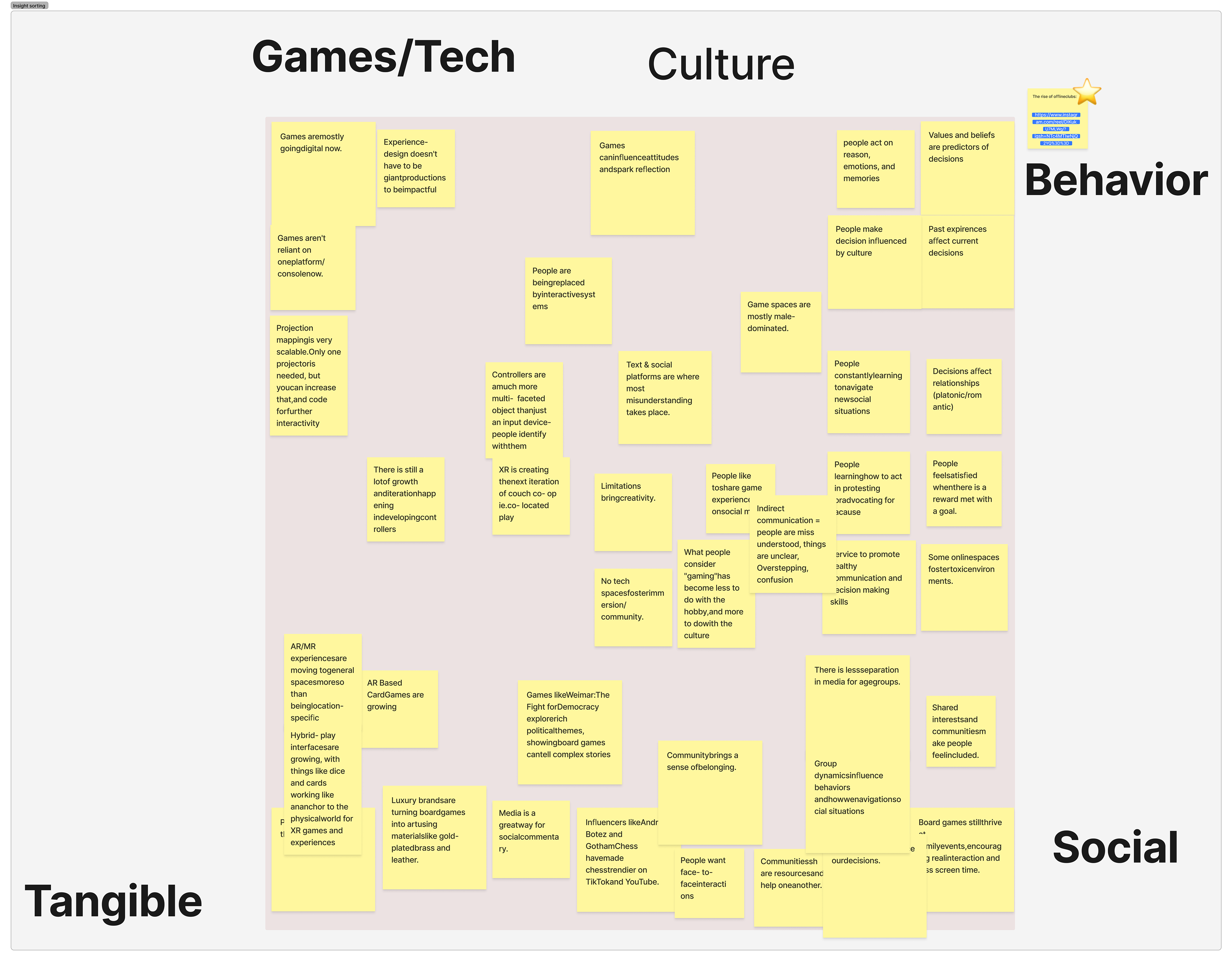
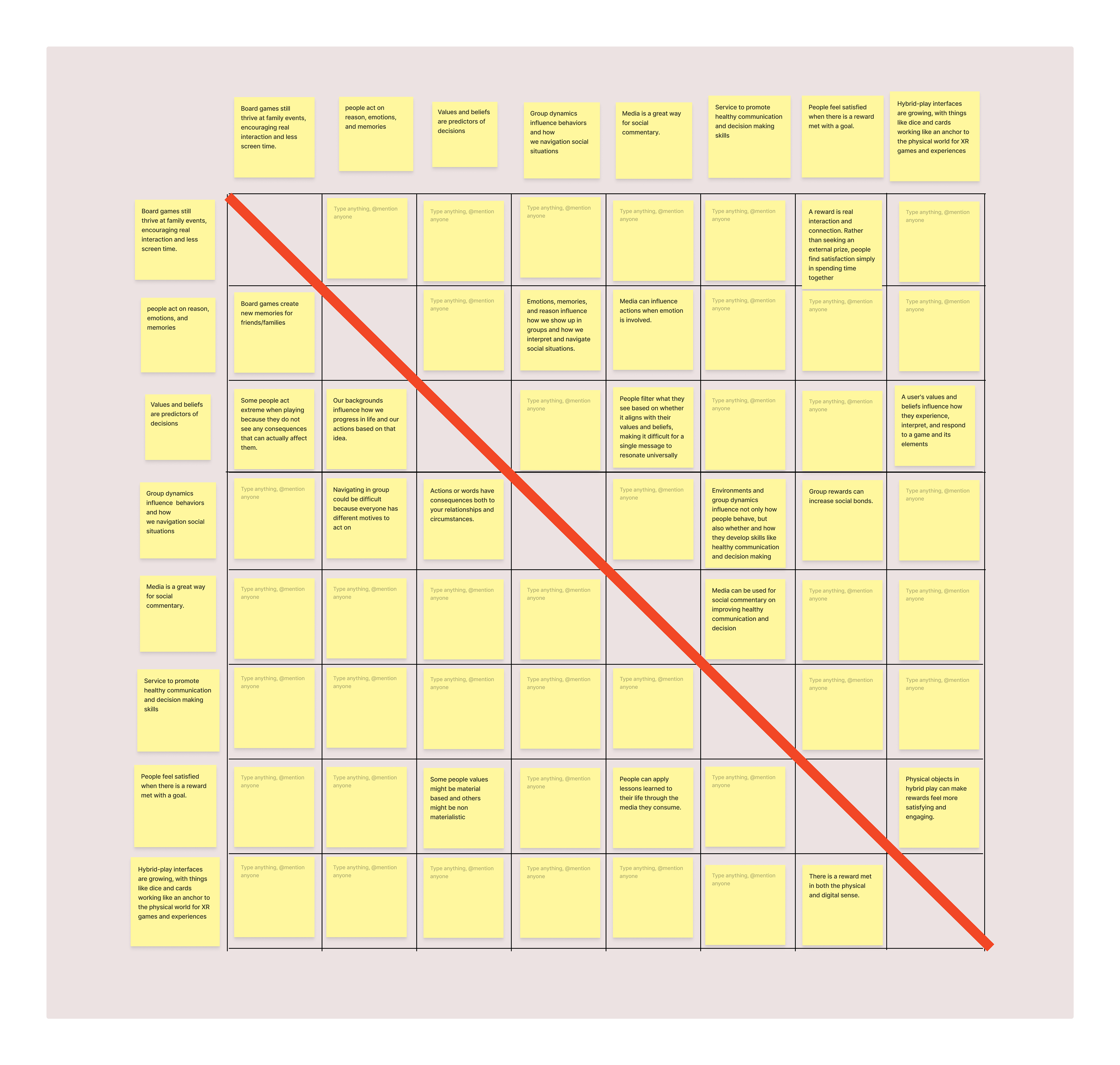
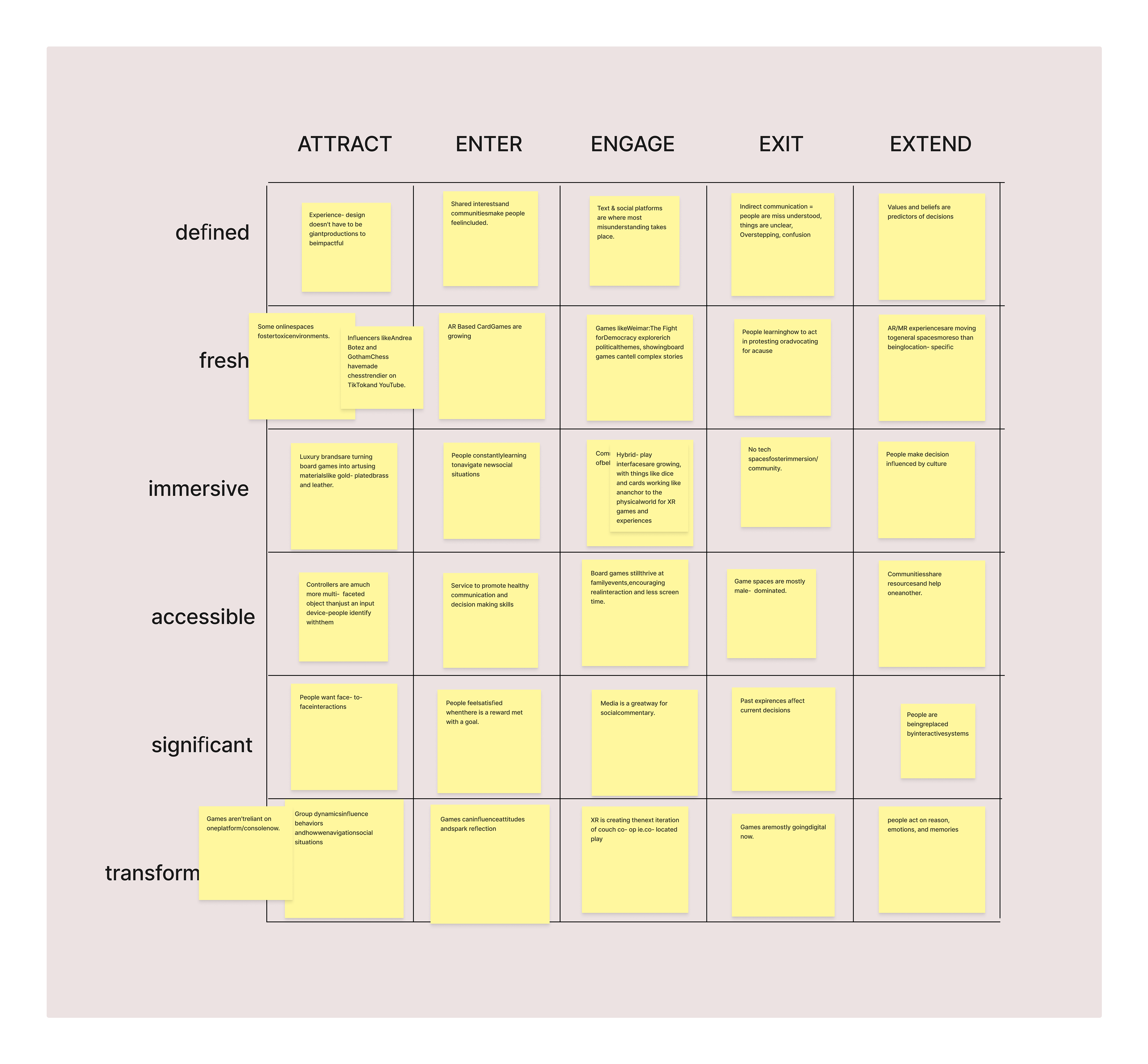
Research and Insights: Team Effort
Concept and Game Mechanics
In the first few weeks we workshopped a lot of our game mechanics to make sure it reflected on our original concept. At first we wanted to create an incentive to play our game without coming off sincere. Through this path we focused more on resource management which we had a lot of pushback on from feedback. Eventually we came to the conclusion together that to center our game back to culture, we needed to personalize our nations more to drive the narrative in the scenario portion.
First we worked together figuring the nations should have sort of value to encompass their nation, an advantage throughout the game or a buff, a disadvantage throughout the game or a de-buff, and a key resource to trade that everyone needs. These changes made sure the nations are key to the game and flexible enough for players to insert themselves and understand their cultures.
Addressing the resource management, we decided to keep it in but tie to it to the nations through a build system. To improve your all encompassing survival meter, you would need to build fortifications and alliances to bring it up. We tied the calamity to the world more making it a bigger threat to the world so it justifies that our players need to build these areas to win the game. Players still their own moral dilemmas to go through the scenario and make their own choices they want without having it be one clear way to win the game.
These changes also changed the structure of our game board where we tried to figure out how to connect our nations through pathways. We experimented with a few ideas from floating islands to connected bridges. We looked to Sorry and Mario Party to figure out the pathway player would take adjusted for the environments we created through our worldbuilding workshop.
Game Mechanic Conception: Team Effort
Worldbuilding and Narrative
As a team we deciding to divide our leaving two people to worldbuilding and narrative. The idea was to take five people all with different ideas and narrow it down to two Narrative Designers for the project to remain consistent.
We had a process where we took two different cultures, compared them to each other, and found where they aligned. For example, we looked at the Hakka from China and the Iroquois from North America and found they built their villages similarly in a circular way surrounded by the forests. Once finding a similarity between the two cultures this is how we wrote the Earth Nation: They are a communal society run by a group of elders. Due to past conflicts, they reside in the woods surrounded by mountains not only to feel guarded but reflect themselves that way towards travelers. For that reason they are Resilient, have an advantage of having Cheaper Fortification requirements, are Bad Traders, and trade Building Materials. We had this same process with the other nations and would build their cultures in a connected way.

Fire Nation Notes
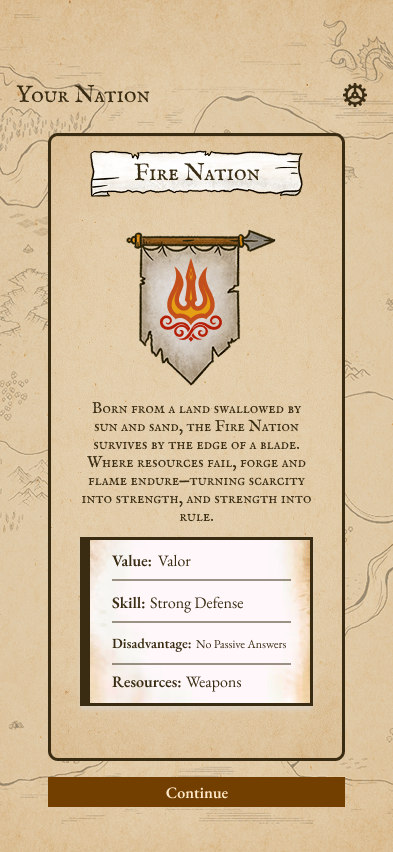
Fire Nation Role Screen

Water Nation Notes

Water Nation Role Screen

Earth Nation Notes
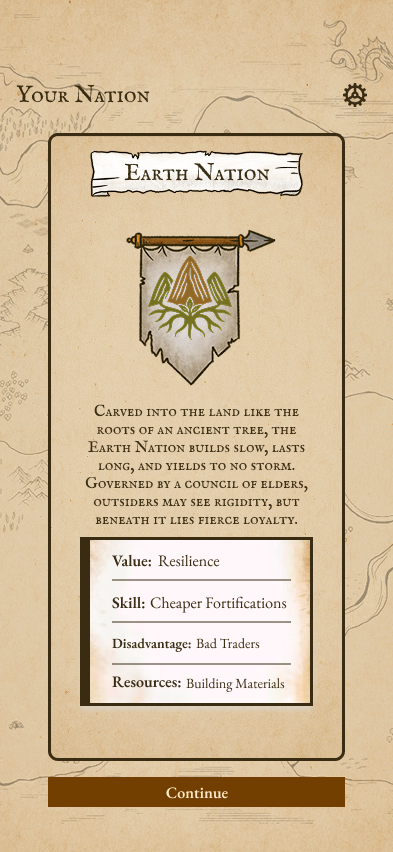
Earth Nation Role Screen

Air Nation Notes
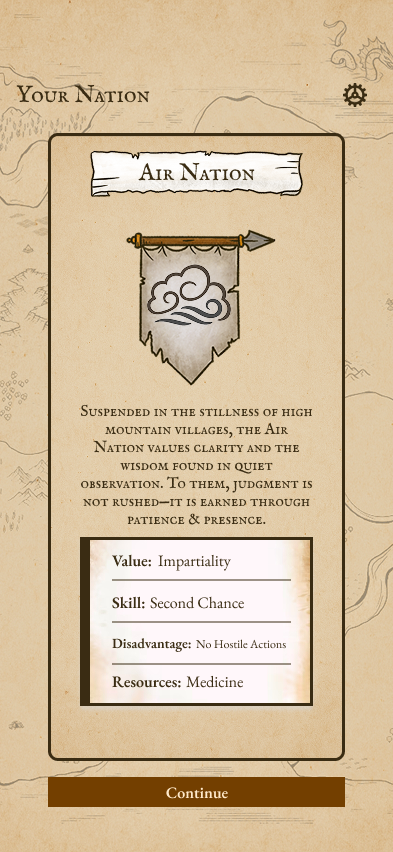
Air Nation Role Screen
Worldbuilding: Sammy and Marcus
Physical Pieces
The narrative shift had a reflection on our game board and game pieces as well. The branding would have an effect on the pieces to match the elements they represented while the game board was adjusted to match the environments of the world.

Board Game Progress

Pawns
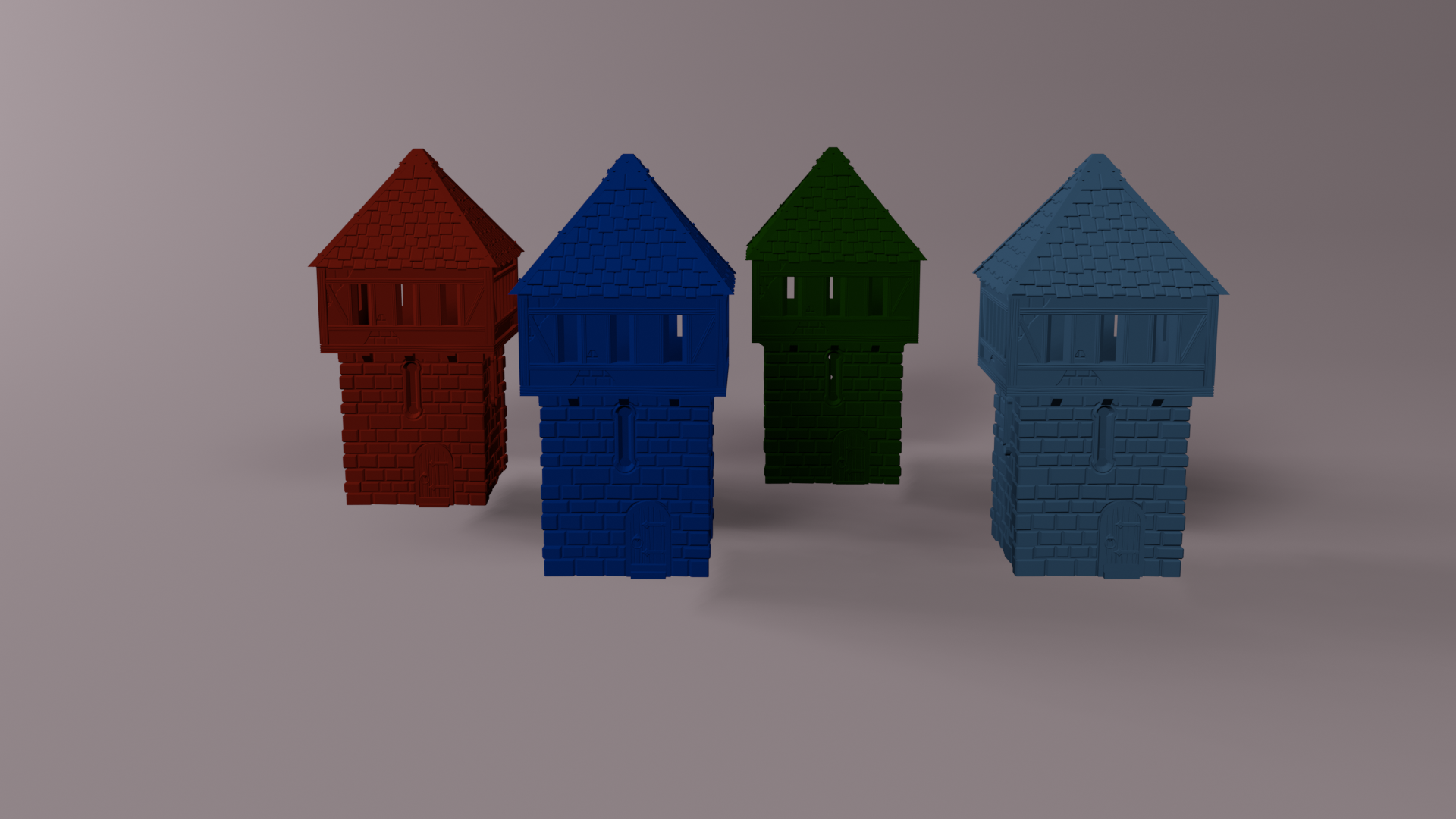
Fortifications
Board Game: Alexander
Physical Pieces: Marcus
UI Wireframes
Early wireframes of our UI were made for a heuristics check and see how the pathway of information is effectively delivered. Through two UI Designers, we designed to ask for feedback on the Tutorial, Role Assignments, Scenarios, and Metrics. These were made before working in our nations' backgrounds so we were mostly focused on the flow of information.
On my screens I tried working out the best way to view metrics and what kind of visuals work best. We were leaning on this trust meter idea through the scenarios you can work out trust with your own nation and the other nations. Other important elements were resources and see how well you're fairing in the game. After the feedback we learned players appreciated an in depth look into their status than a summary, wanted more information to the tutorials than being thrown into the game, and wanted time to read on their roles and the scenarios they are in.

UI Screens - Lie
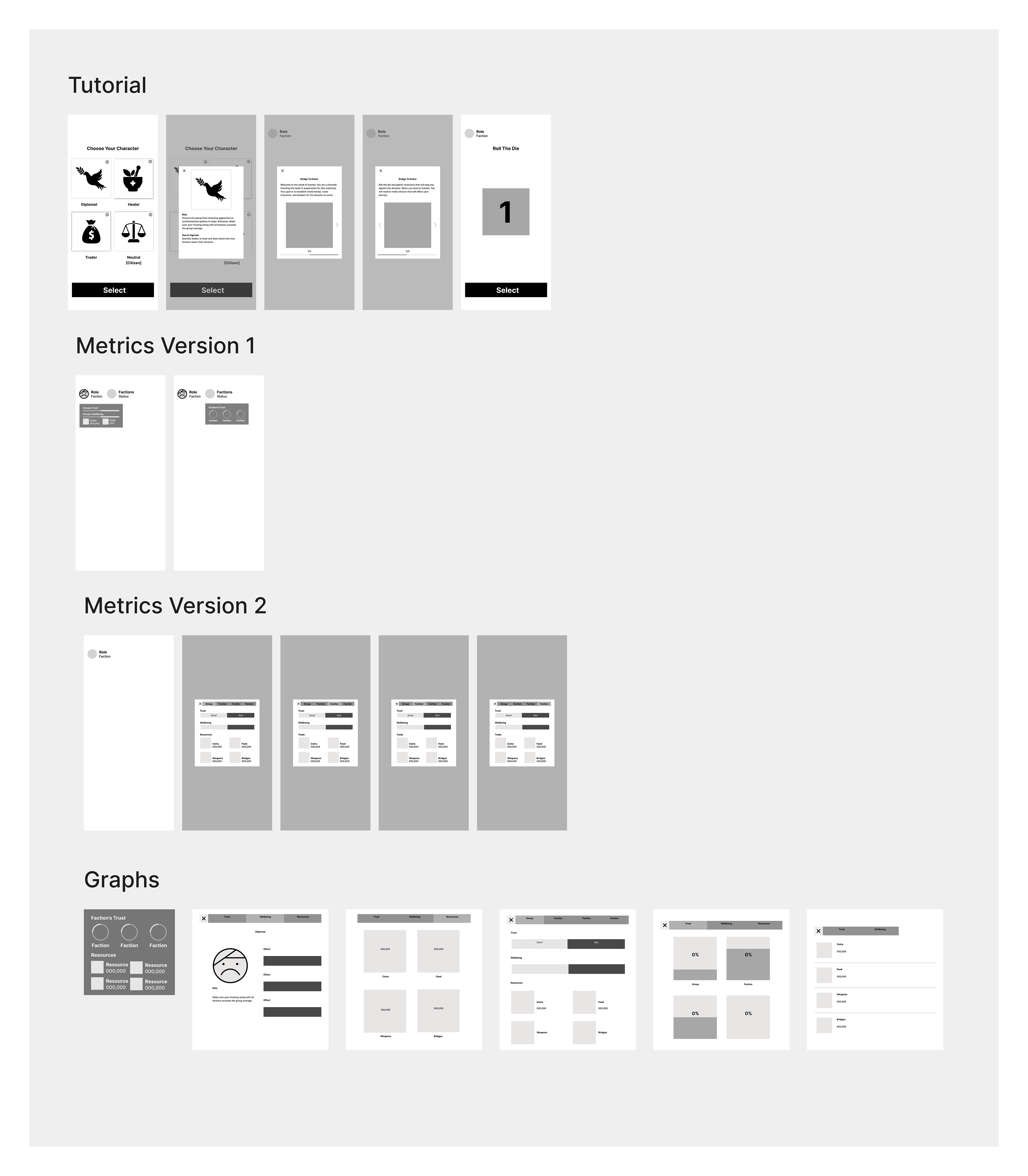
UI Screens - Sammy
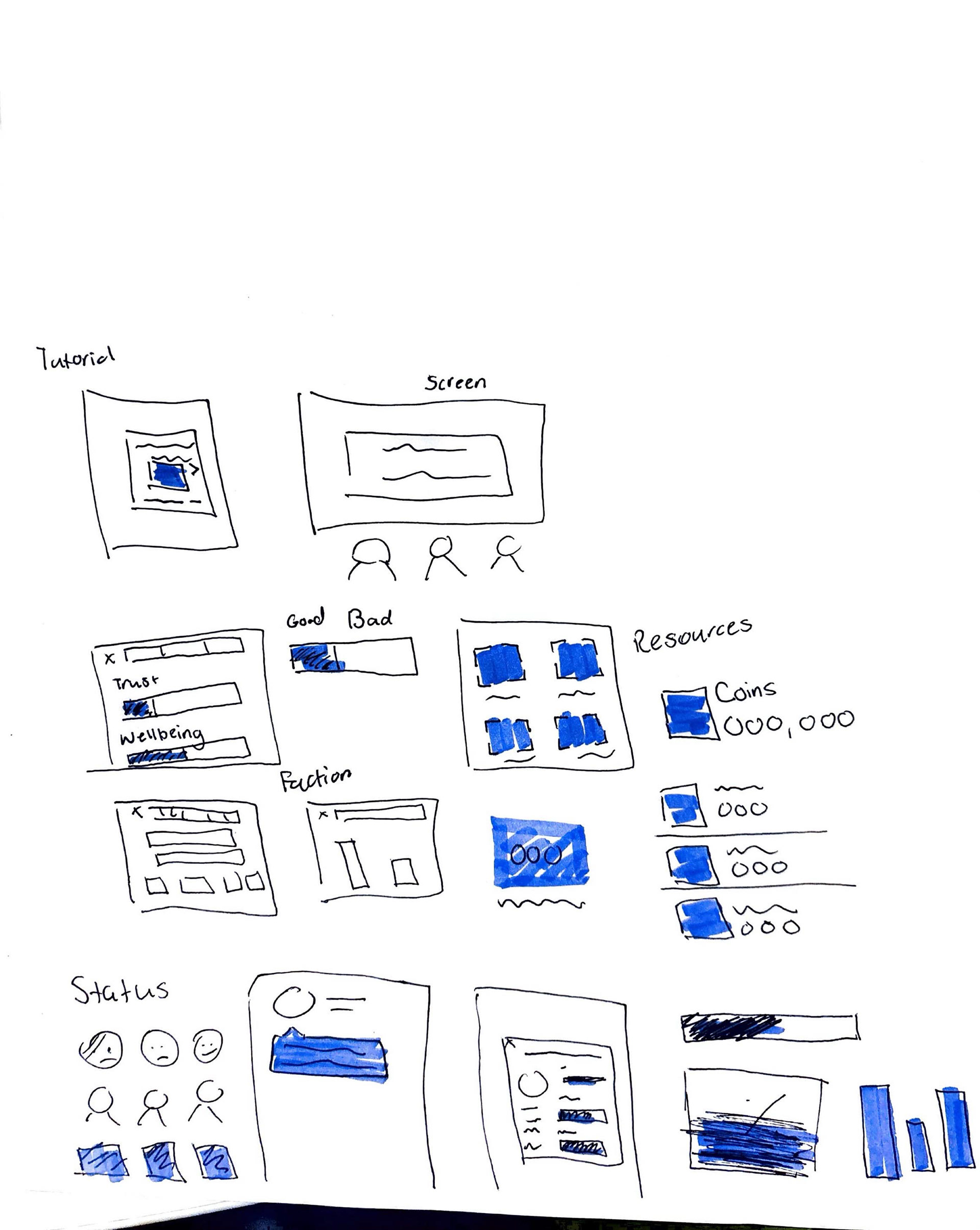
Wireframe Sketches
Wireframes: Lie and Sammy
UI Mid Fidelity
We stuck to gray boxing for Mid Fidelity to use the screens for play testing without bias and the branding was still being worked on. For the metrics, they were confused about the connections being present in the scenarios section as it looked like a life meter. They also commented on the amount of turns set for the game feeling a little too long. Overall though, they appreciated the story telling and enjoyed trying out the Fire Nation. After our player feedback, I worked with our Art Director to implement the branding to our screens and fix major flaws in our UI.
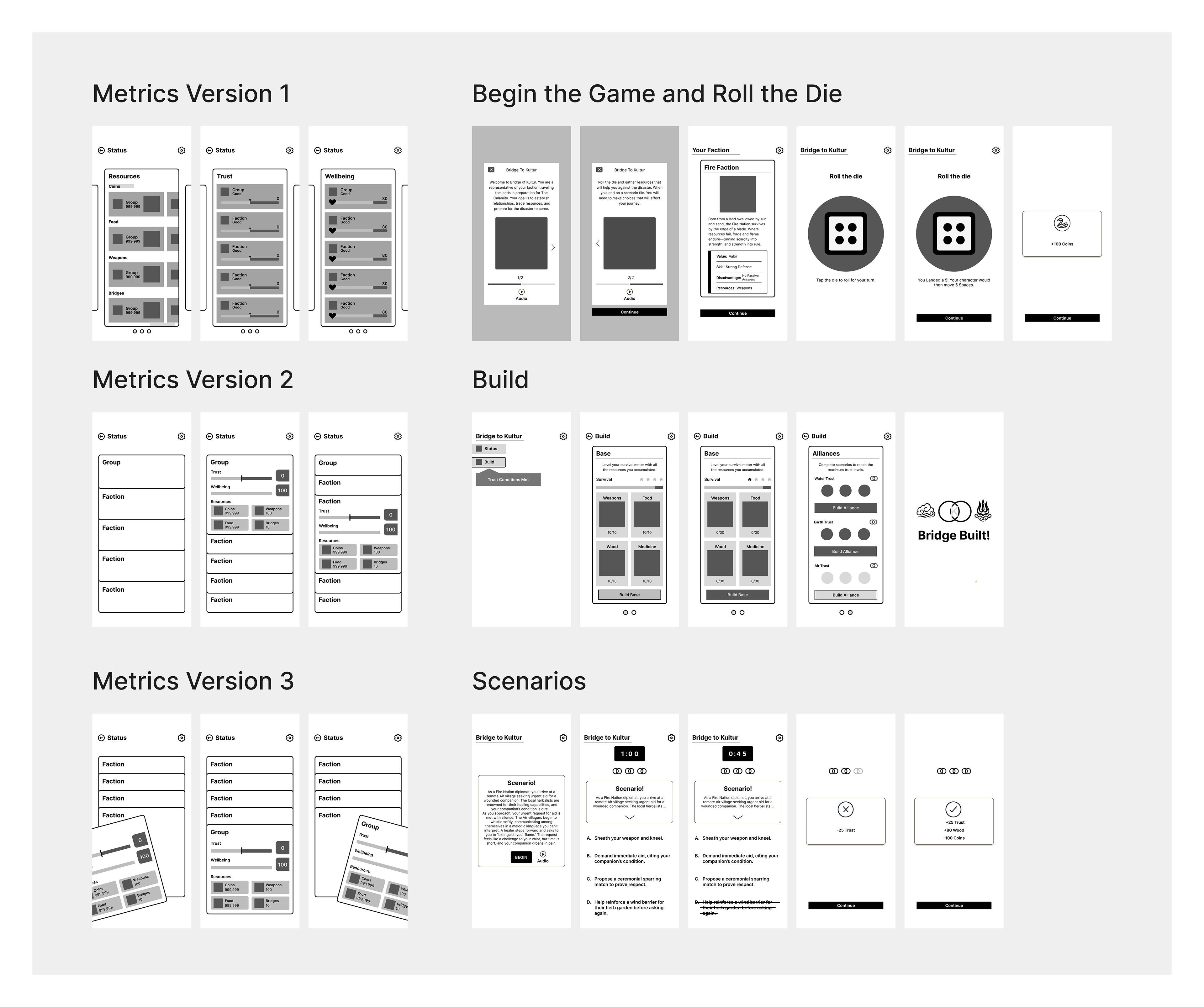
Midfidelity Screens

Status Sketches
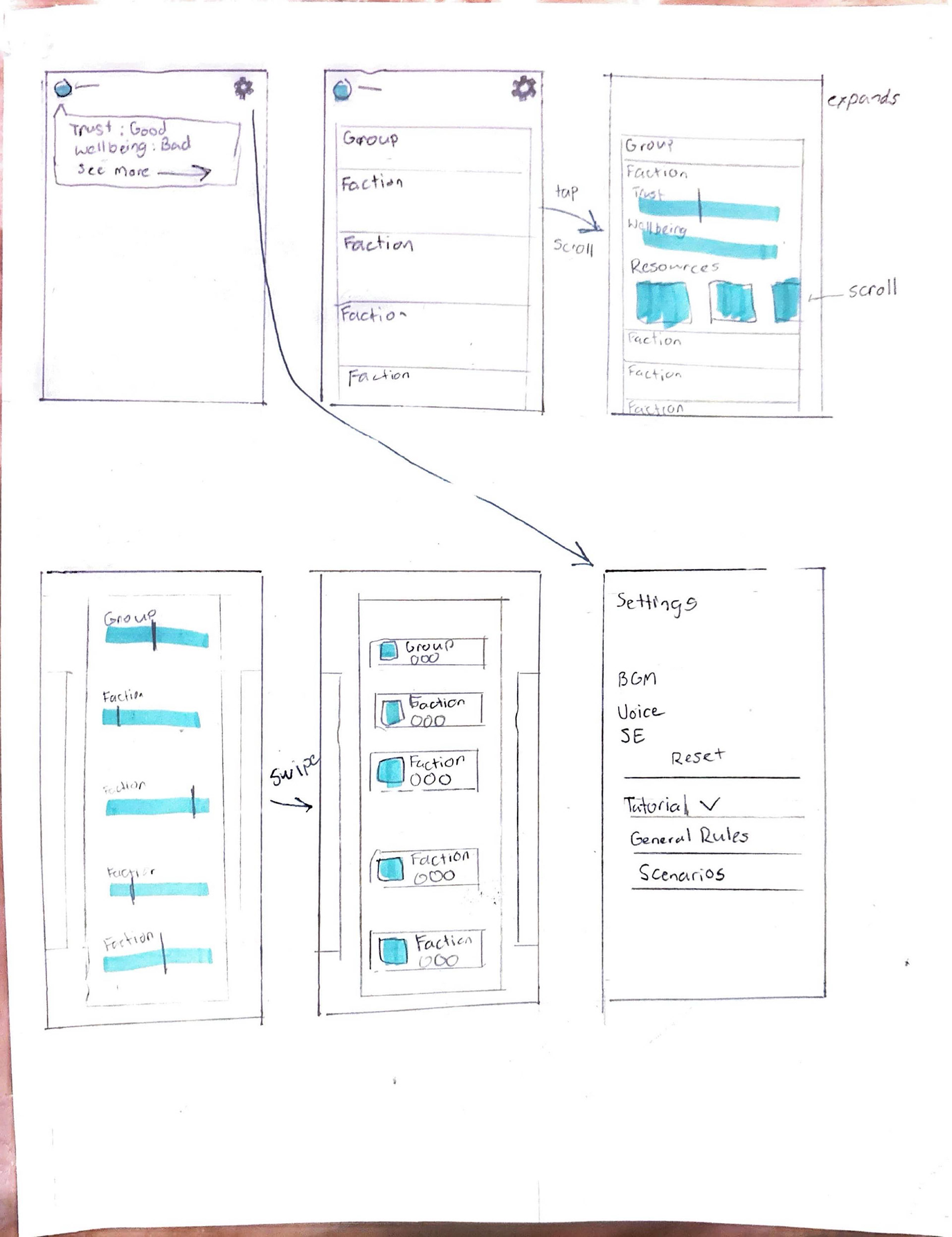
Status Sketches
Status and Build Screens: Sammy
Scenario: Lie
Branding
The branding for our game was in a Medieval Manuscript style. This style reflects the game's goal on diplomacy, trust, and survival. The art direction was lead by one other person but we collaborated together to make sure our elements were ADA accessible. I also took all of these assets and implemented to all of the final screens to prototype.
Art Direction: Princess
Final UI
The flow of our final UI starts with setting up the board by pairing the app to the game board, choosing the desired playtime, and difficulty that would affect the scenarios. The player then goes through a brief tutorial on the goals of the game and gets assigned a nation. Players can always look back at their Nation's overview through the Status menu in the Dashboard, but these assignments are key to how they will move throughout the game.
Similar to Mario Party, each player takes their turn one at a time and moves around the board. They roll the die and can land on: Income - earn coins and resources passively, Tax - lose coins and resources passively, Trade - a shop to purchase items, and Scenario - the core gameplay. In Scenarios, players are given a text prompt to read through before they want to start making a decision. Once they press Begin, a timer starts and they must make their decision. Options will cross out after a certain amount of time which varies depending on difficulty that pushes out to the worst answer at the hardest difficult. Between the decision making, players can look back at the prompt in a popup that will also pause their timer if chosen. Results vary from a timer result screen, worst and bad choice screens, and best and good choice screens. The prototype is playable to land on either screen if you would like to try it out. If a player lands on a Scenario tile in their Nation's land, they gain coins and resources.
Outside turns, players can access their dashboard to check their Nation's description, the Alliances they made, and their Survival Meter and Resources in Status. In Build, they can either take their resources to build their Fortifications or build an Alliance once successfully passing three scenarios with another Nation. All actions improve their Survival Meter which needs to pass a certain threshold to win the game.
Near the end of the game, The Calamity will send out an Omen to take a chunk out of everyone's survival meter. Fire Nation took less damage because of their skill of Strong Defense. This is just one of the examples of how skills affect gameplay as every other nation has some sort of skill that aids their playthrough. After the last few rounds wrap up, the player will either win or lose and can check how they and the other players did throughout the game.
UI and Prototype: Sammy
Animations: Lie
Assets: Princess
Final Physical Pieces
These are the final iterations of the board game and game pieces. The board game has the base location set facing the player from how they are sitting and the arrows in the banner show what direction should they move. There is also a QR code to pair the app to the board and a spot to lay Scenario Cards. Scenario Cards are NFC cards the player can tap to their phone to open a scenario with the Nation they landed on. Other pieces like the pawns are what players use to move around the board and Fortifications are a reflection to an earned item after leveling Fortifications.

Board Game
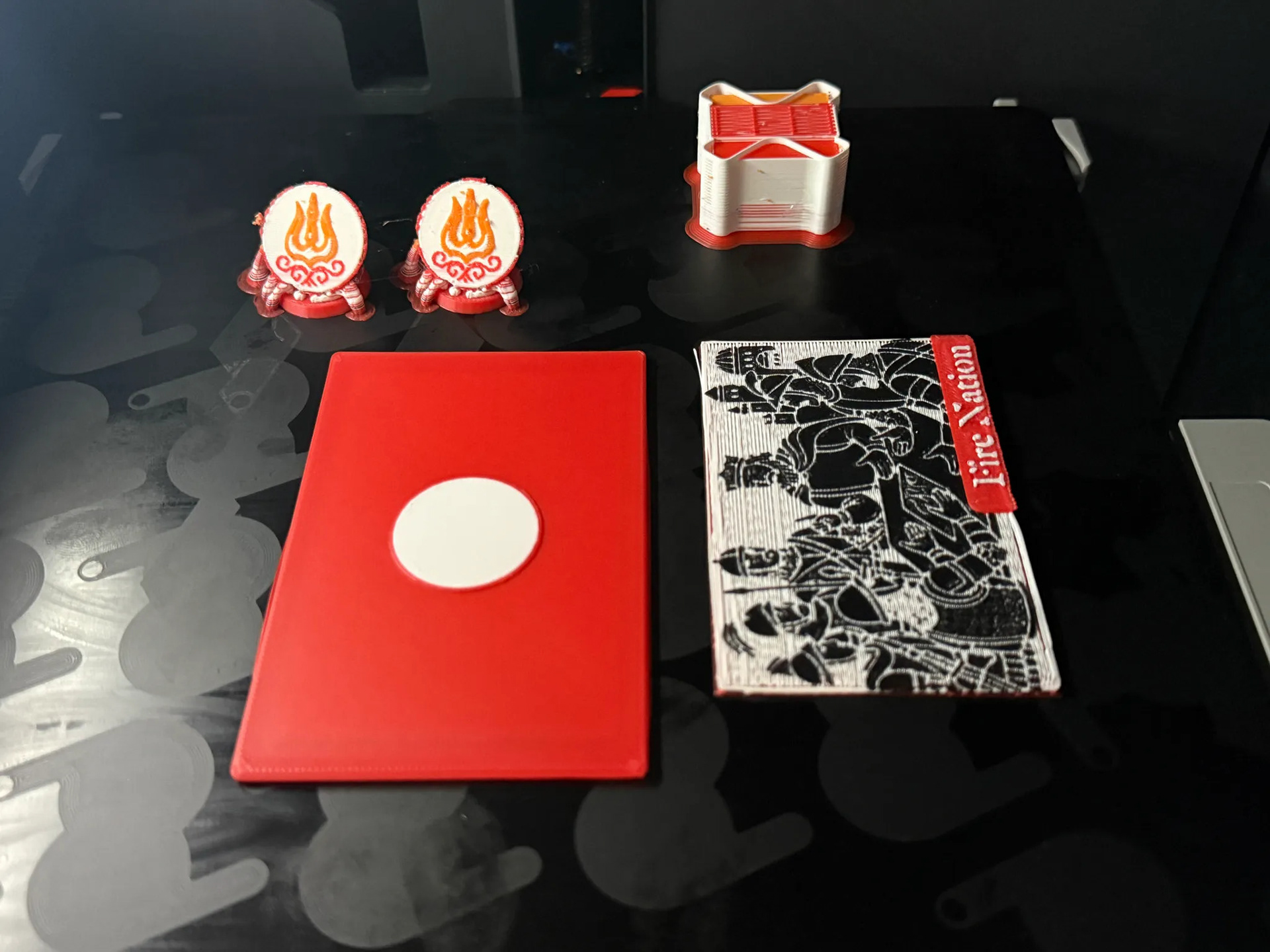
Game Pieces
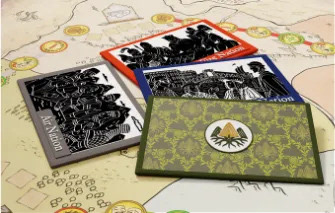
Scenario Cards

Fortifications
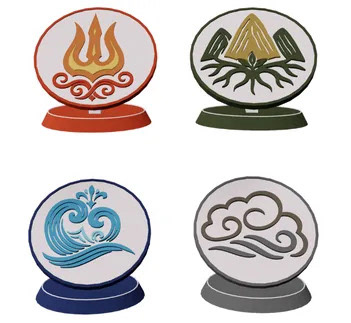
Nation Pawns

Scenario Cards
Game Board: Alexander
Game Pieces: Marcus
Retrospective
Future considerations we would like to push forward is improving the immersive story telling by adding more animations to a possible third screen everyone can watch. Other than that we have been thinking on pitching this game at events like IndieCade or put it on Kickstarter. We would need funds to run a server for the app and physical pieces which we guess to price around $70k if this were ever to come to life.
All in all, this was a great project to be a part of. Everyone played an important role bringing this game to life and we all did a great job making it all come together. I appreciated all the times we bonded throughout this project whether it's getting pizza for our late night or nerding out over storytelling and games we like. We had a great working system for our group and I would love to make another game with everyone of them again.
